

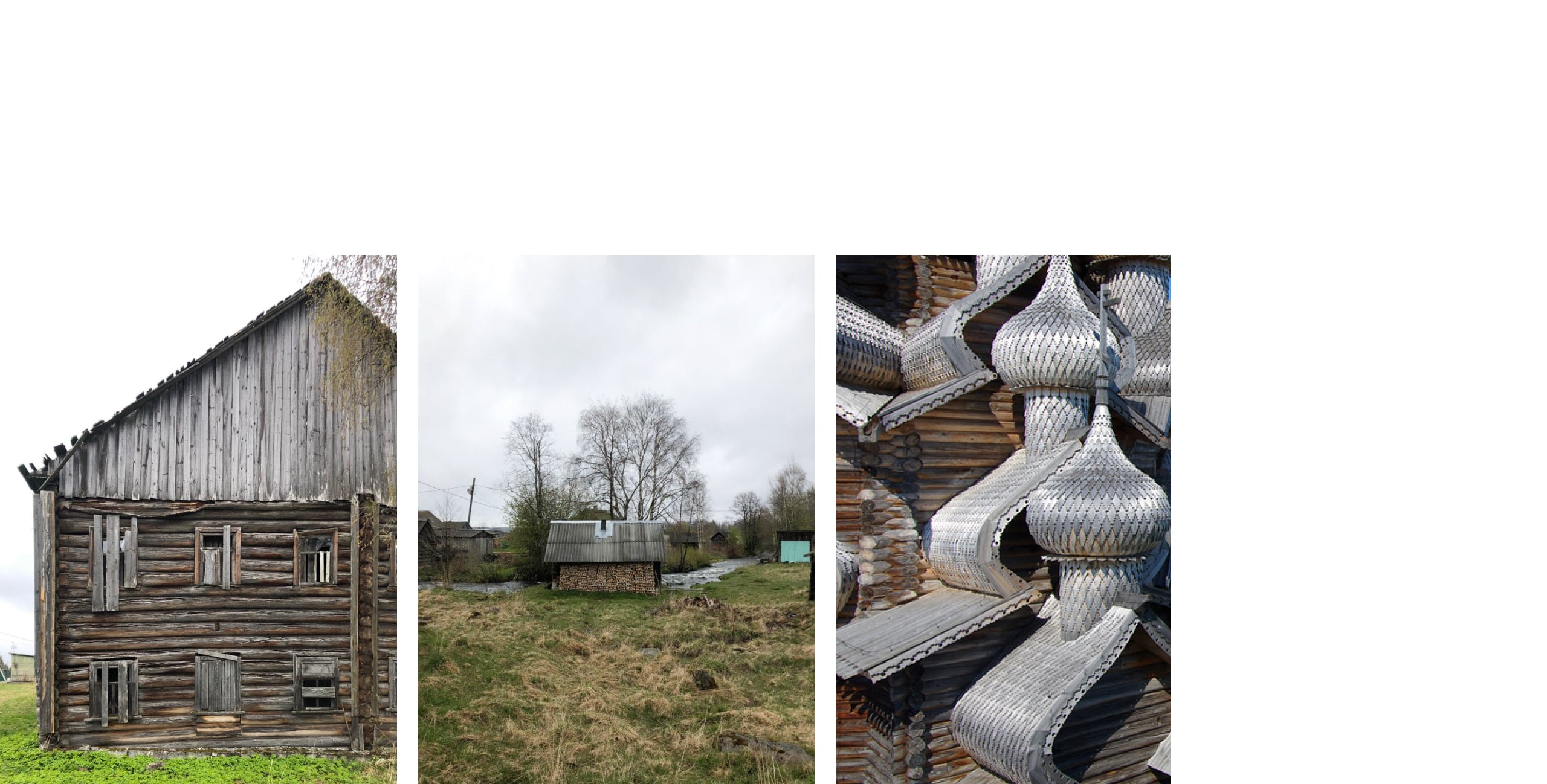


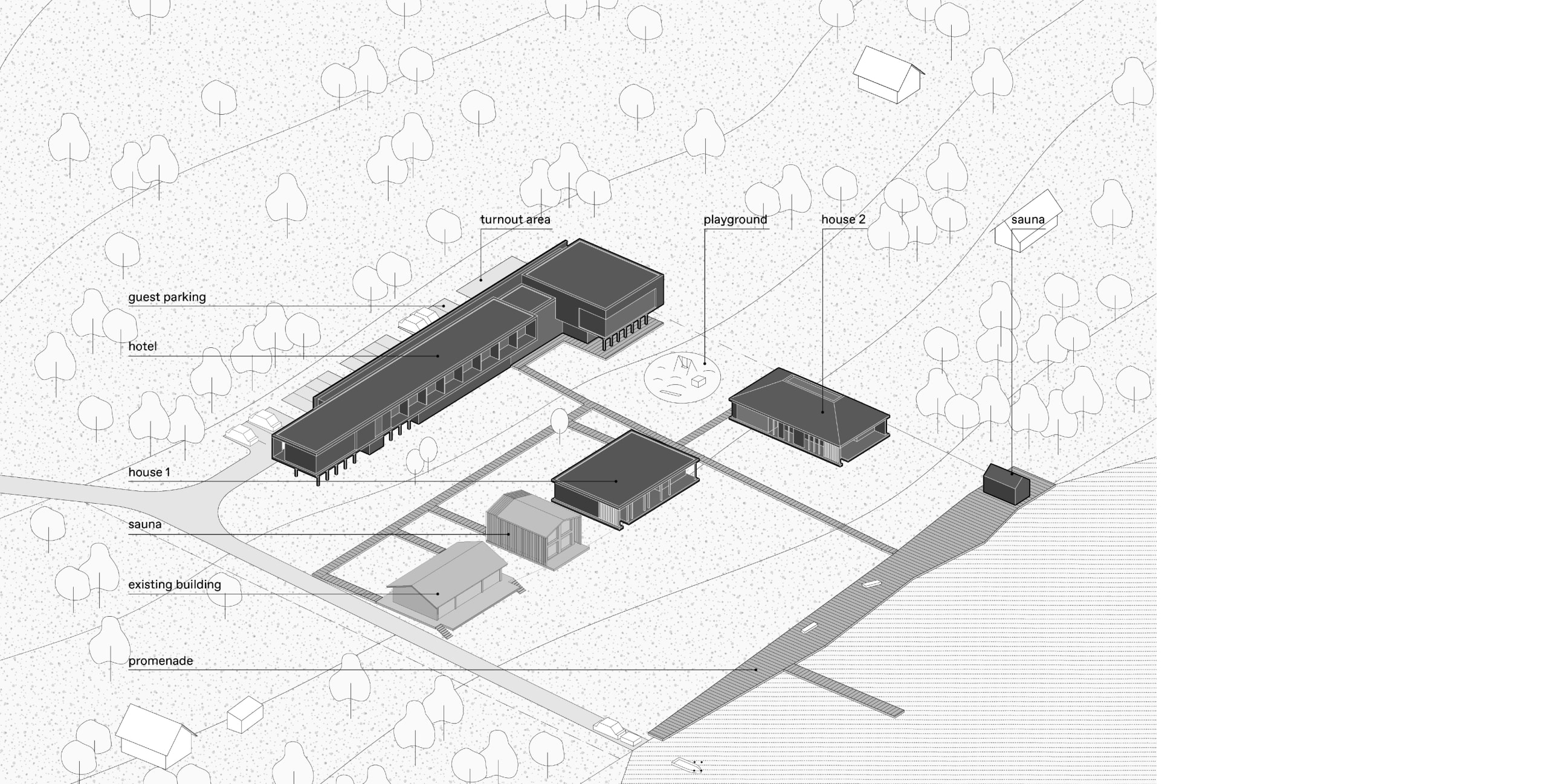







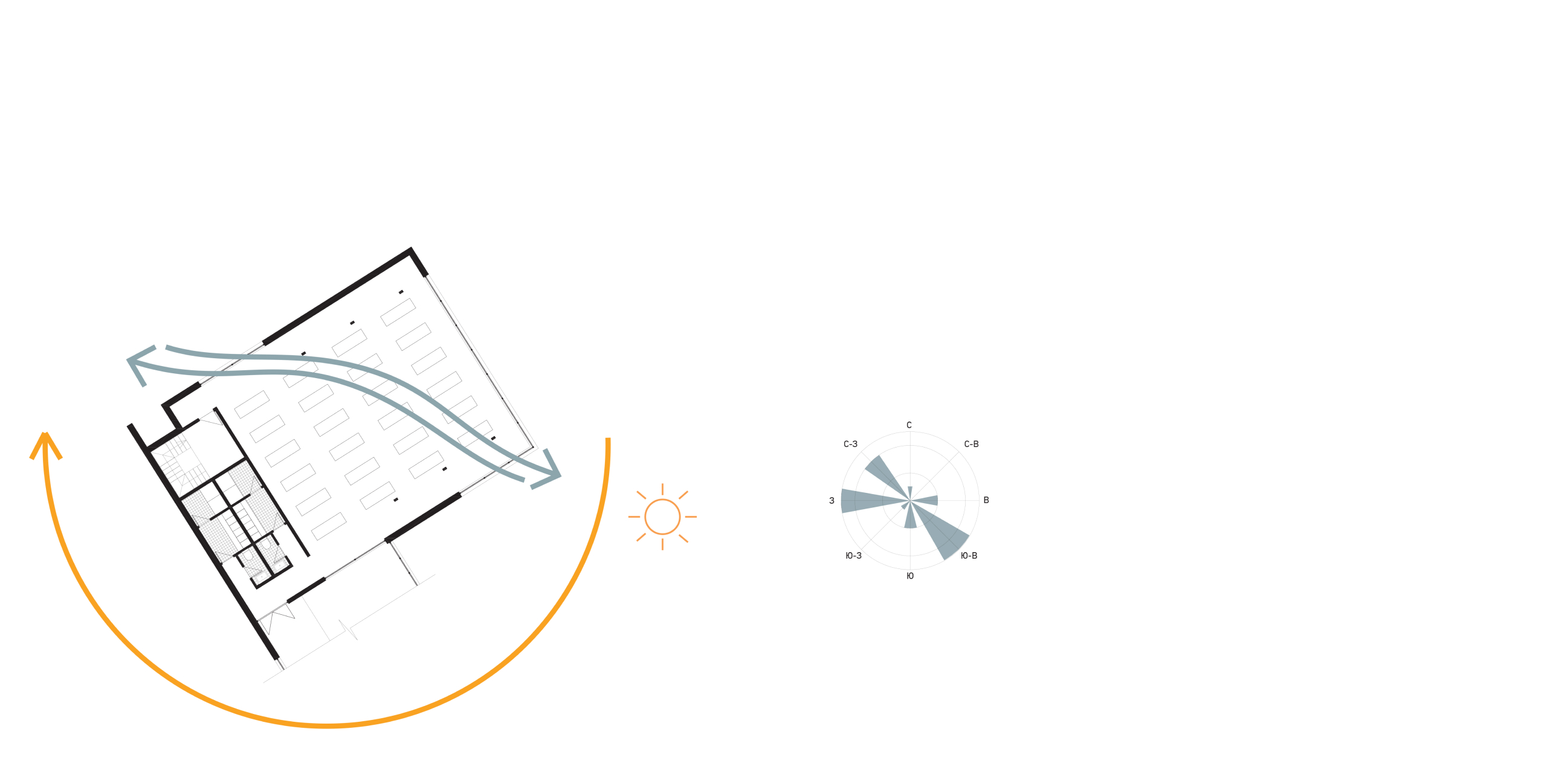

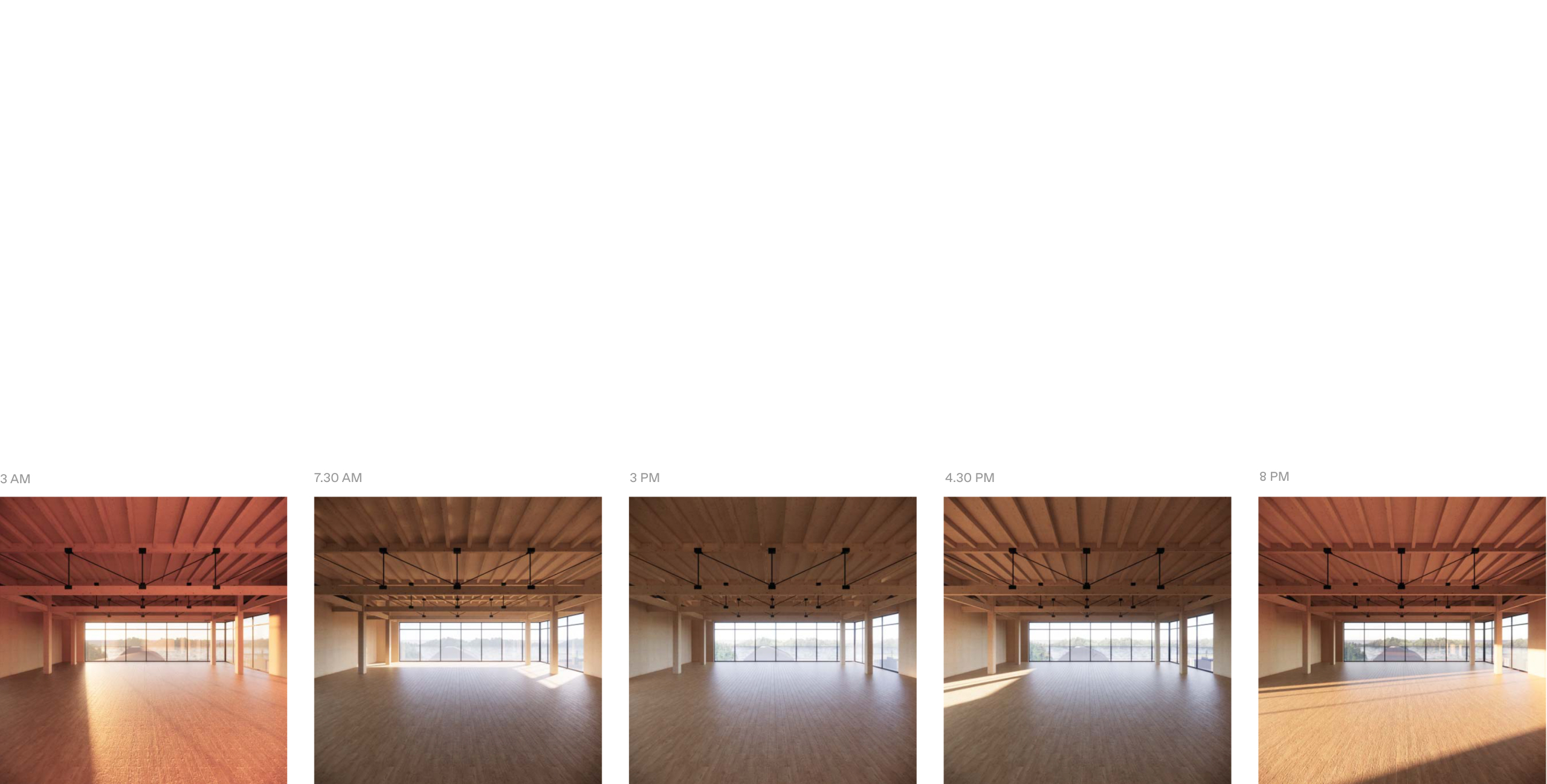

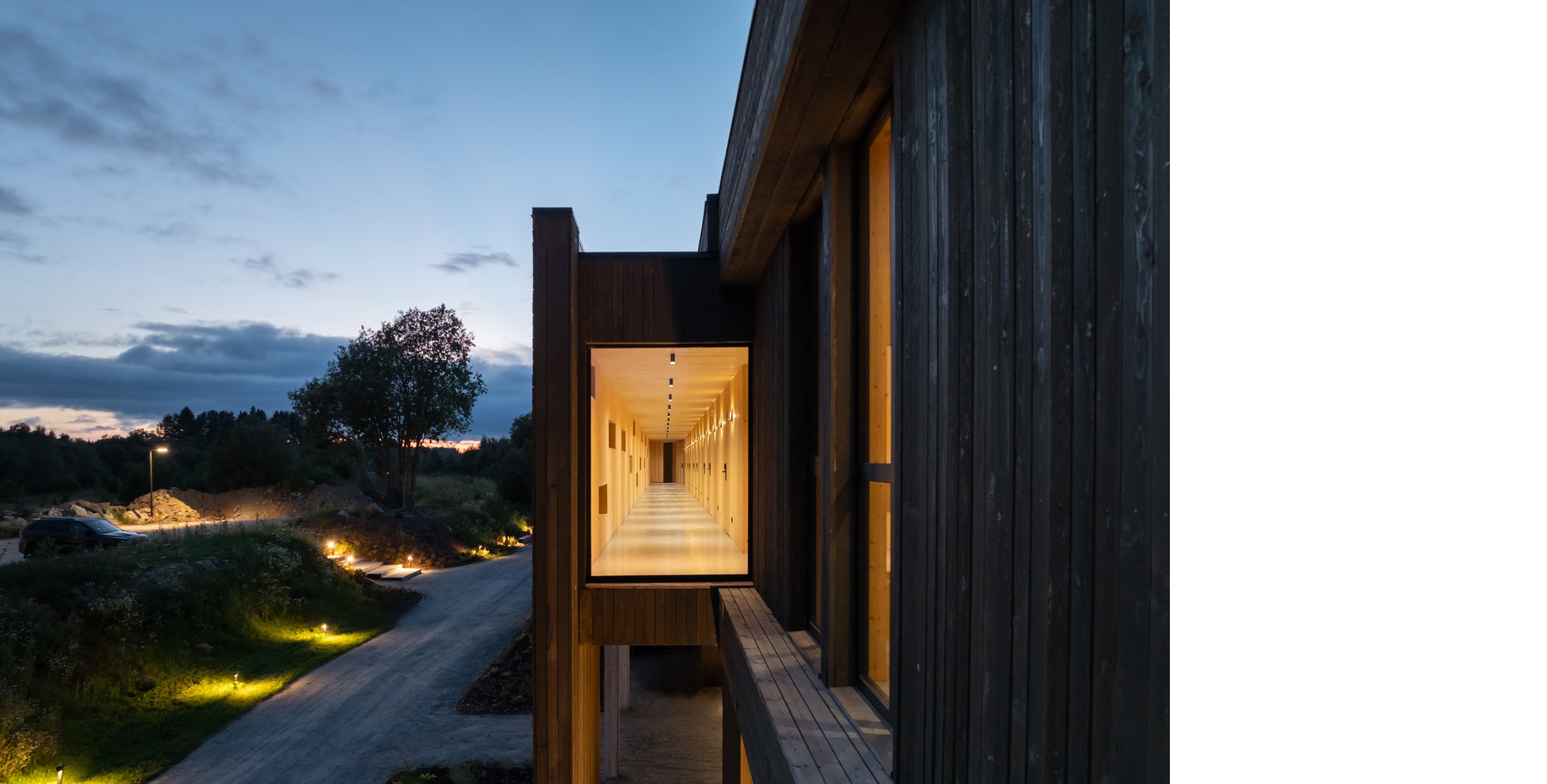
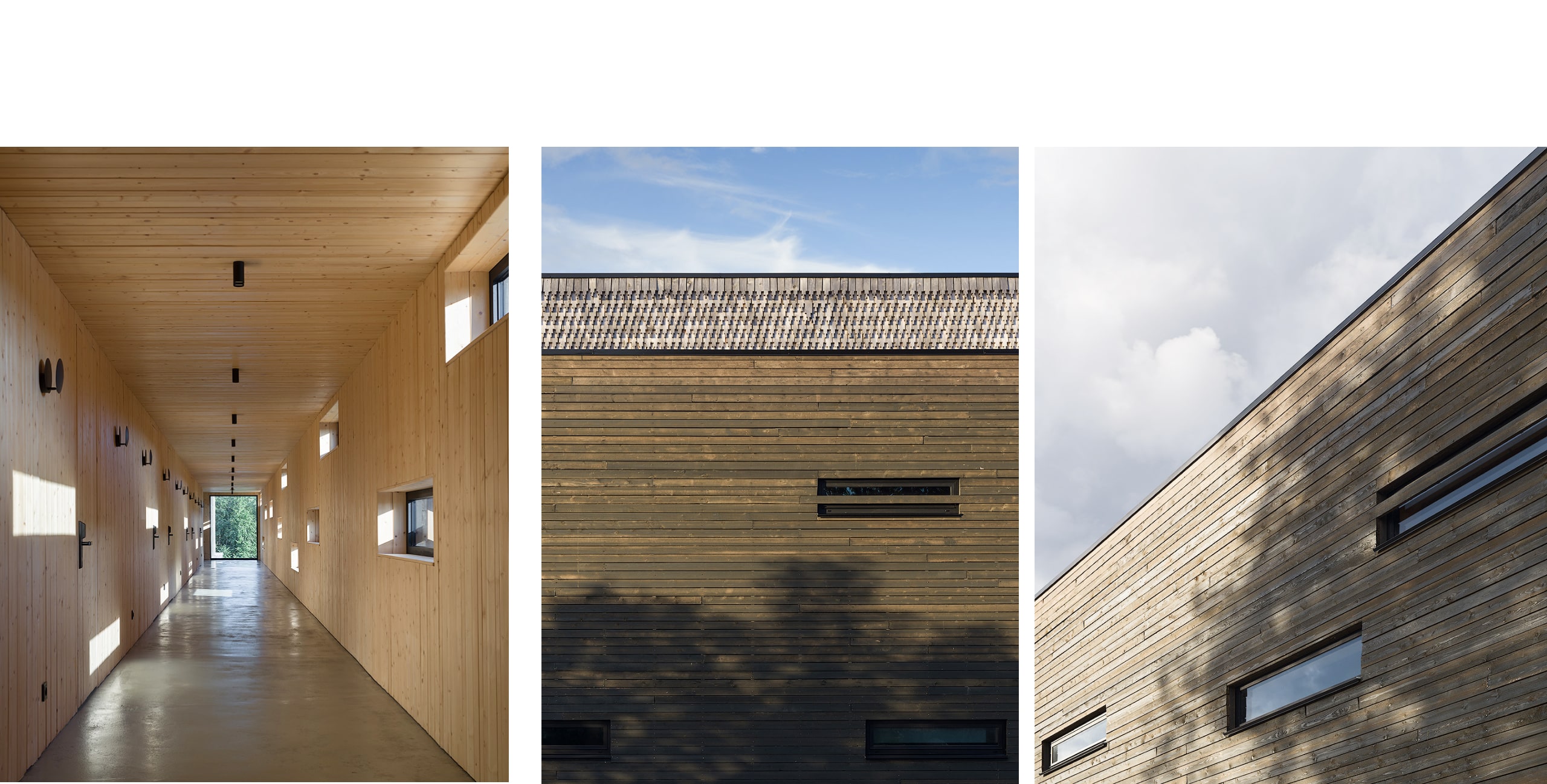
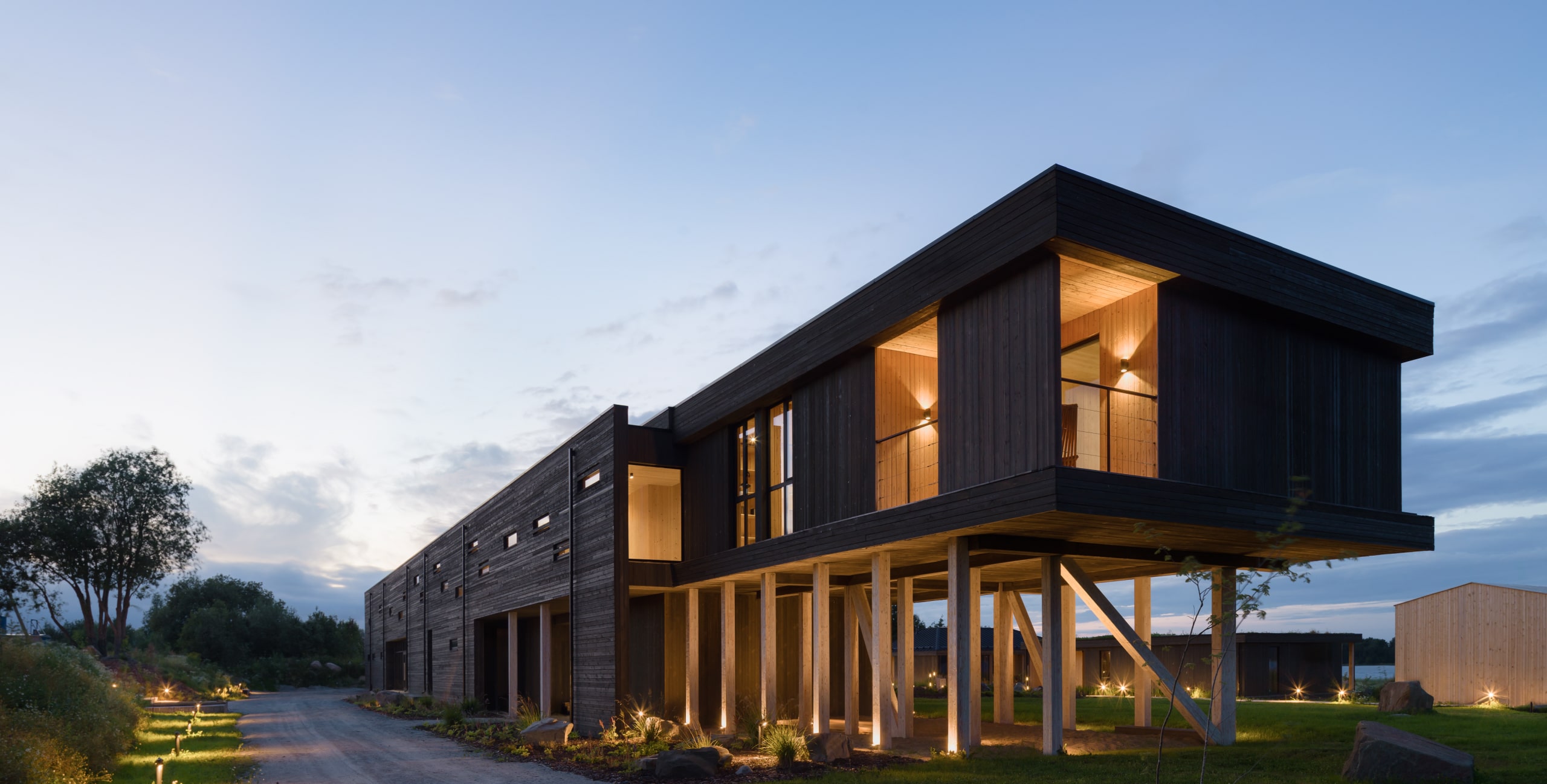


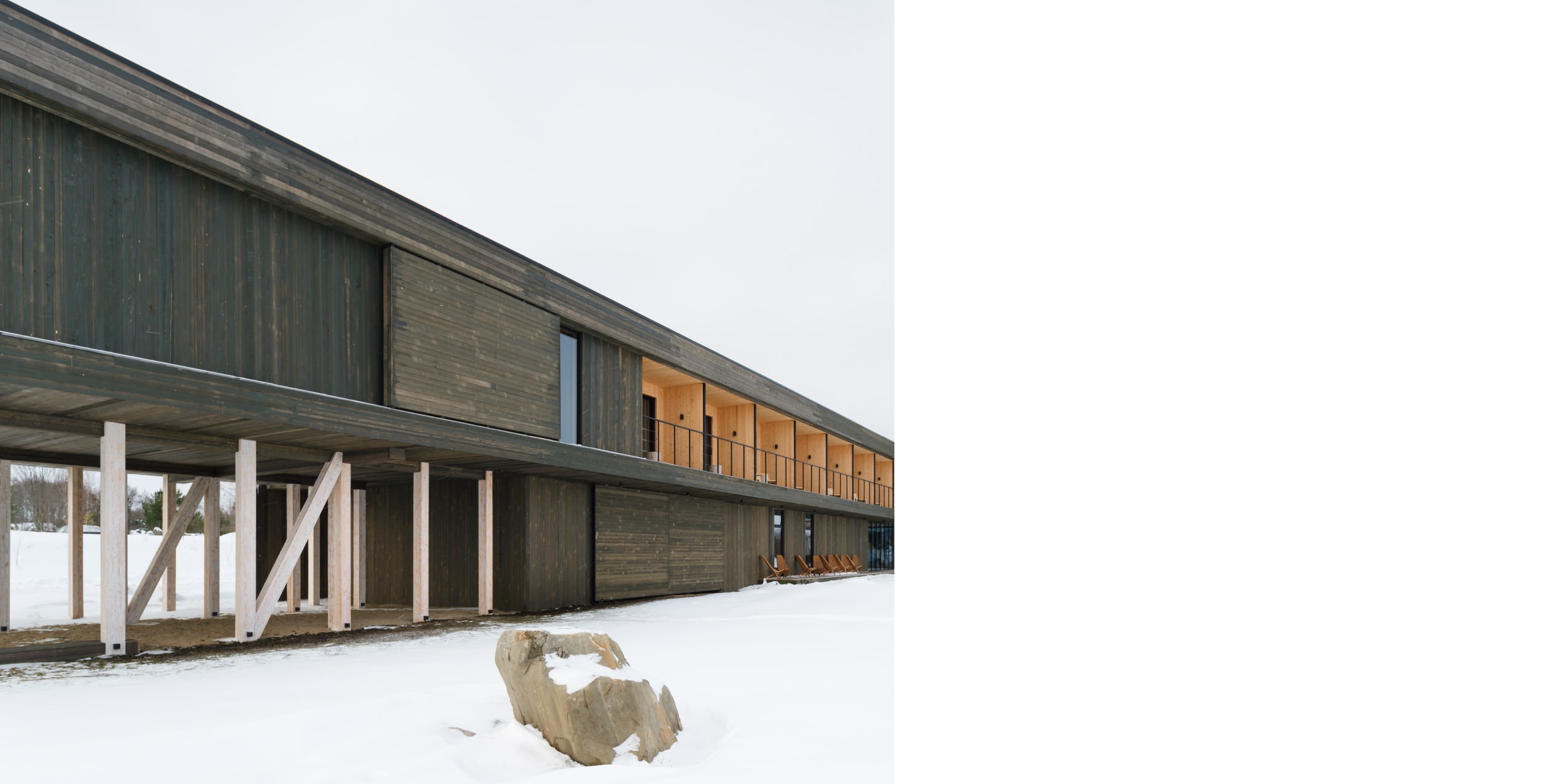

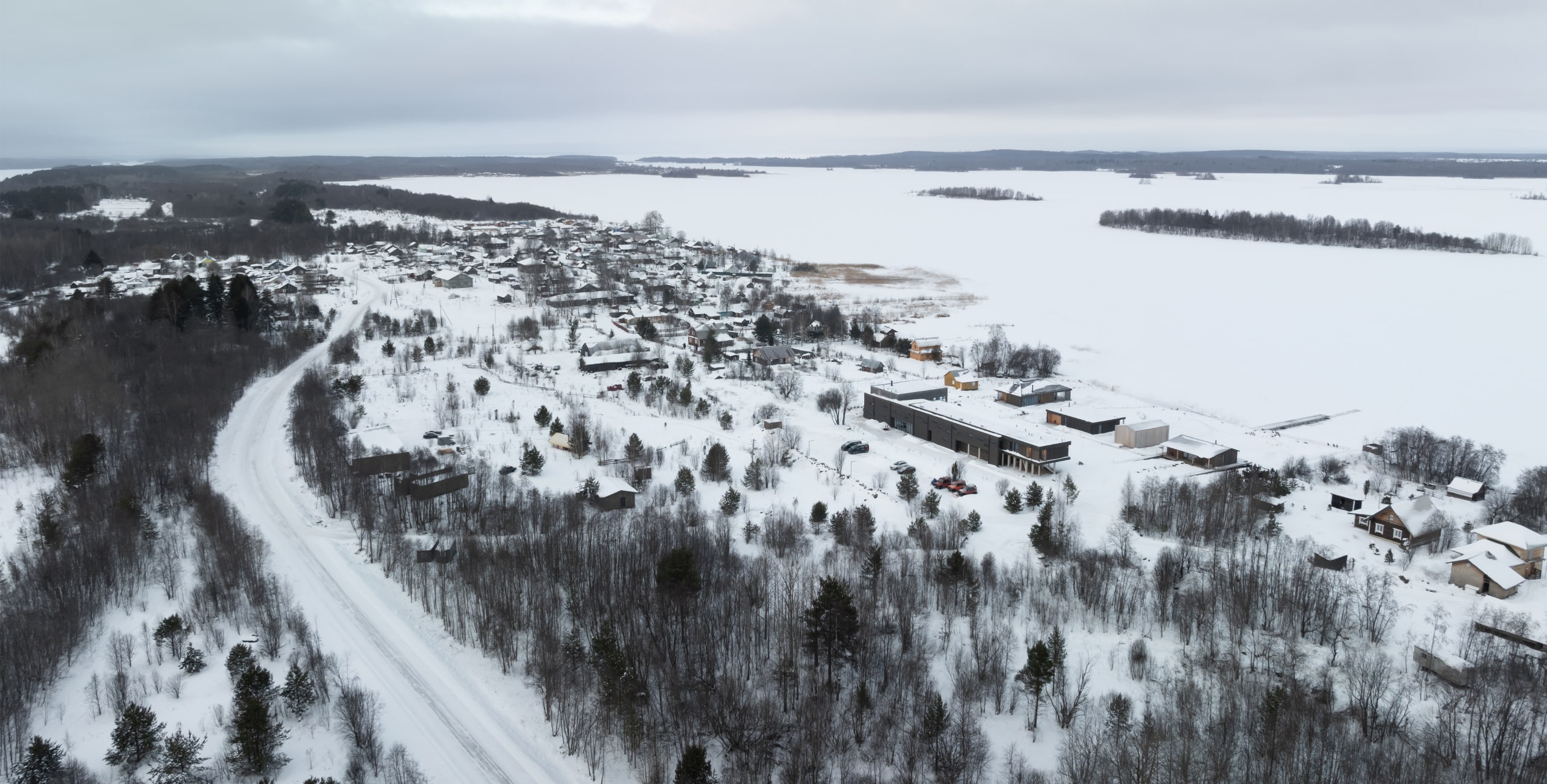



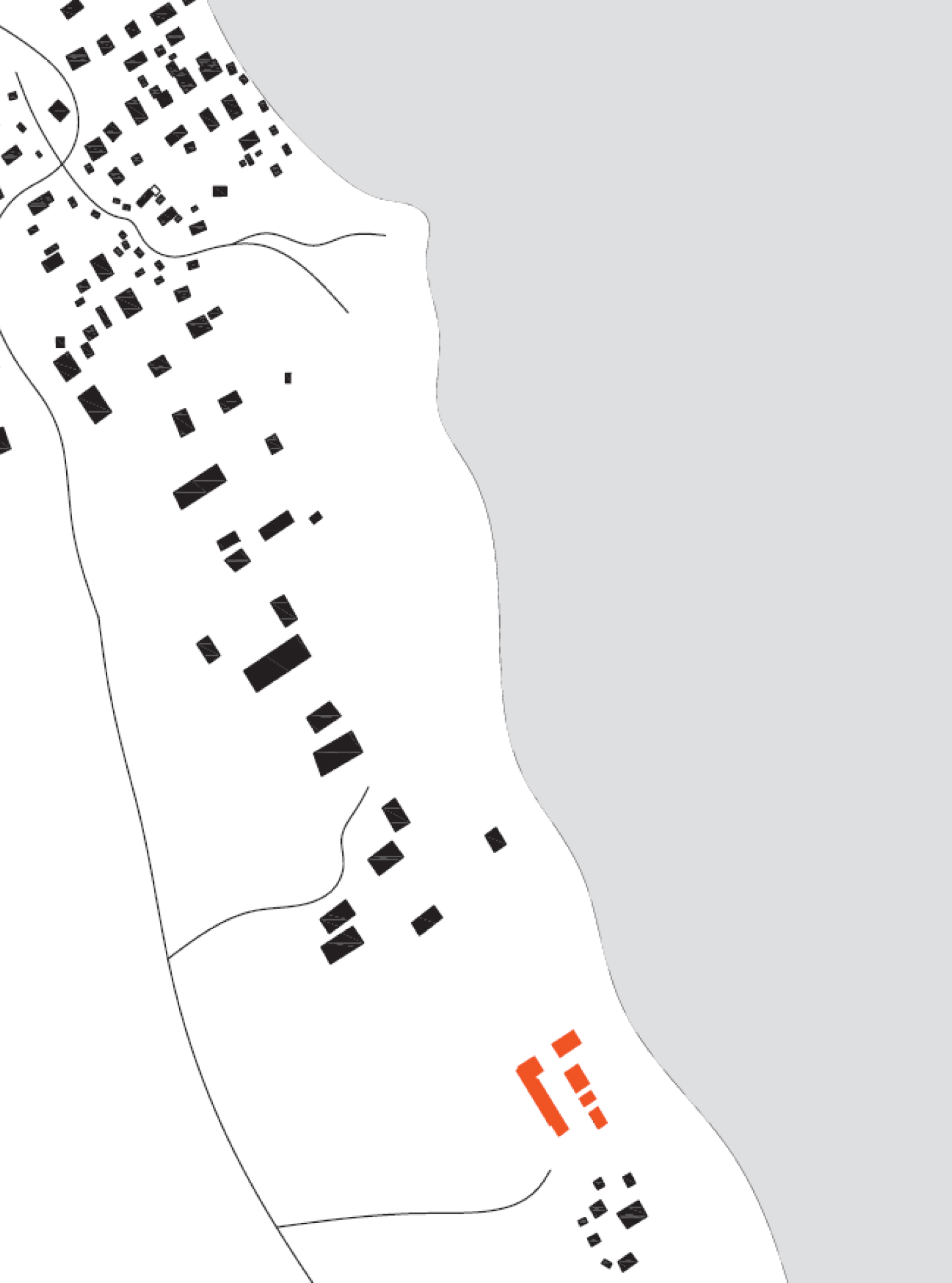
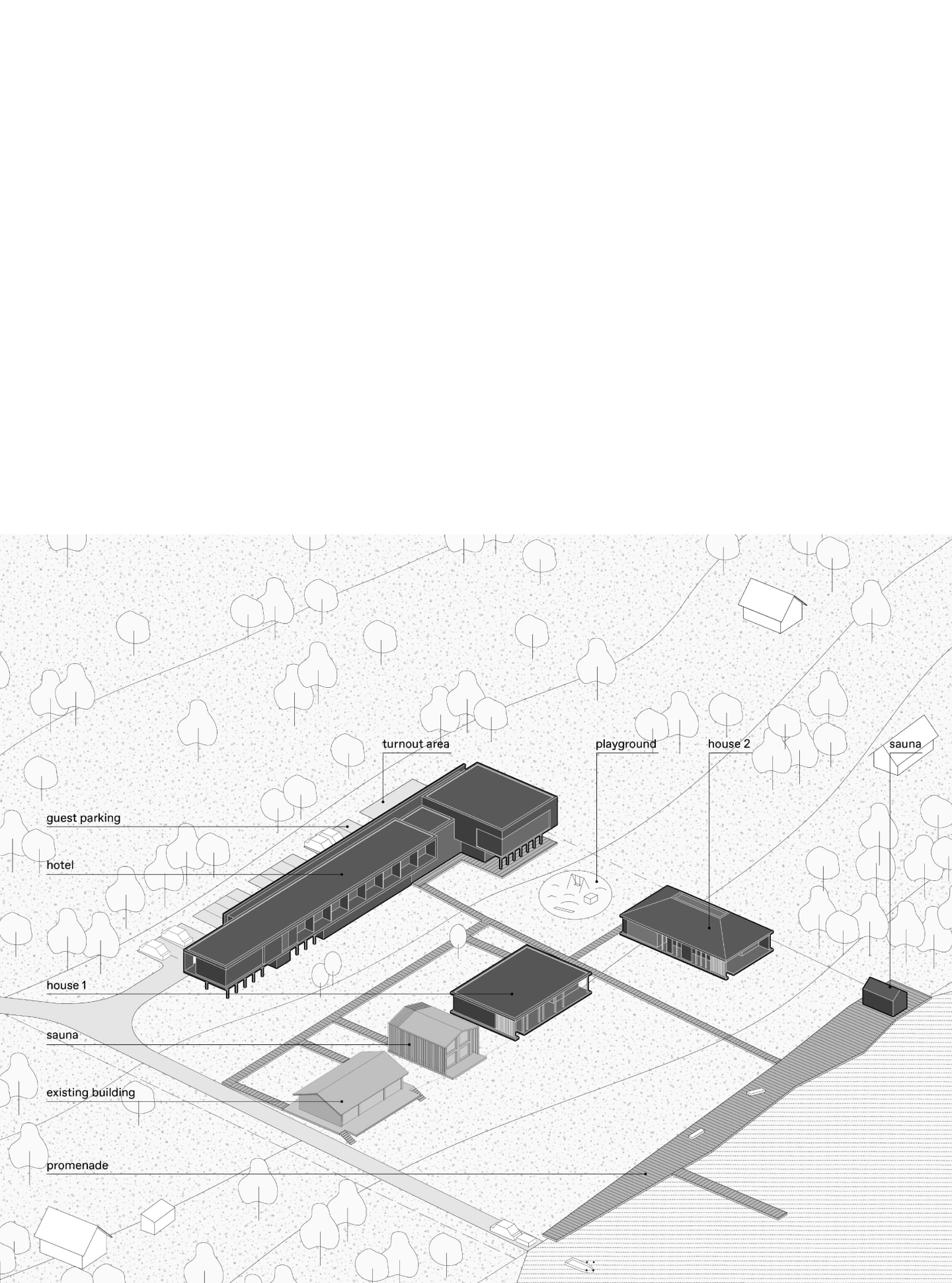
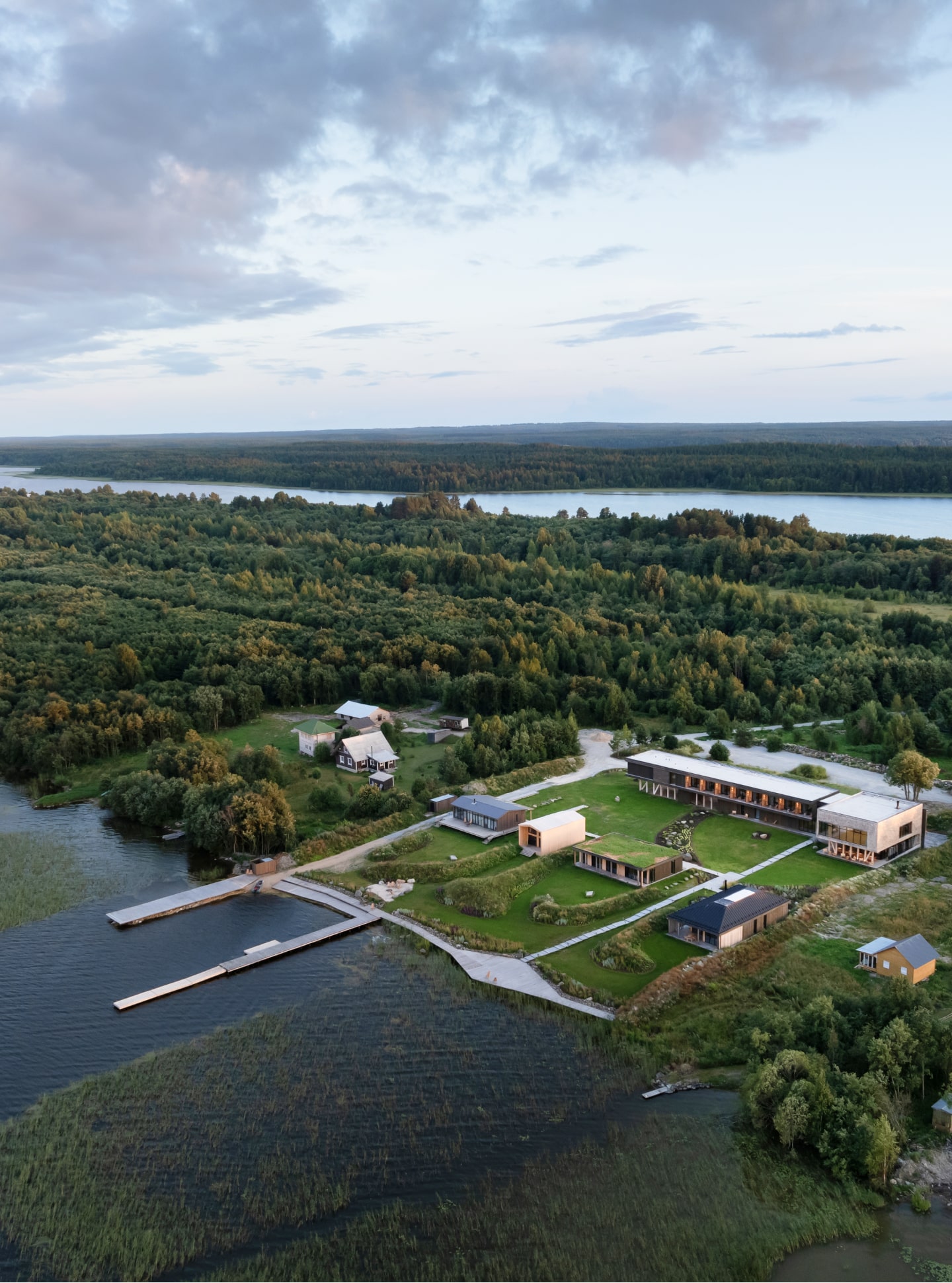
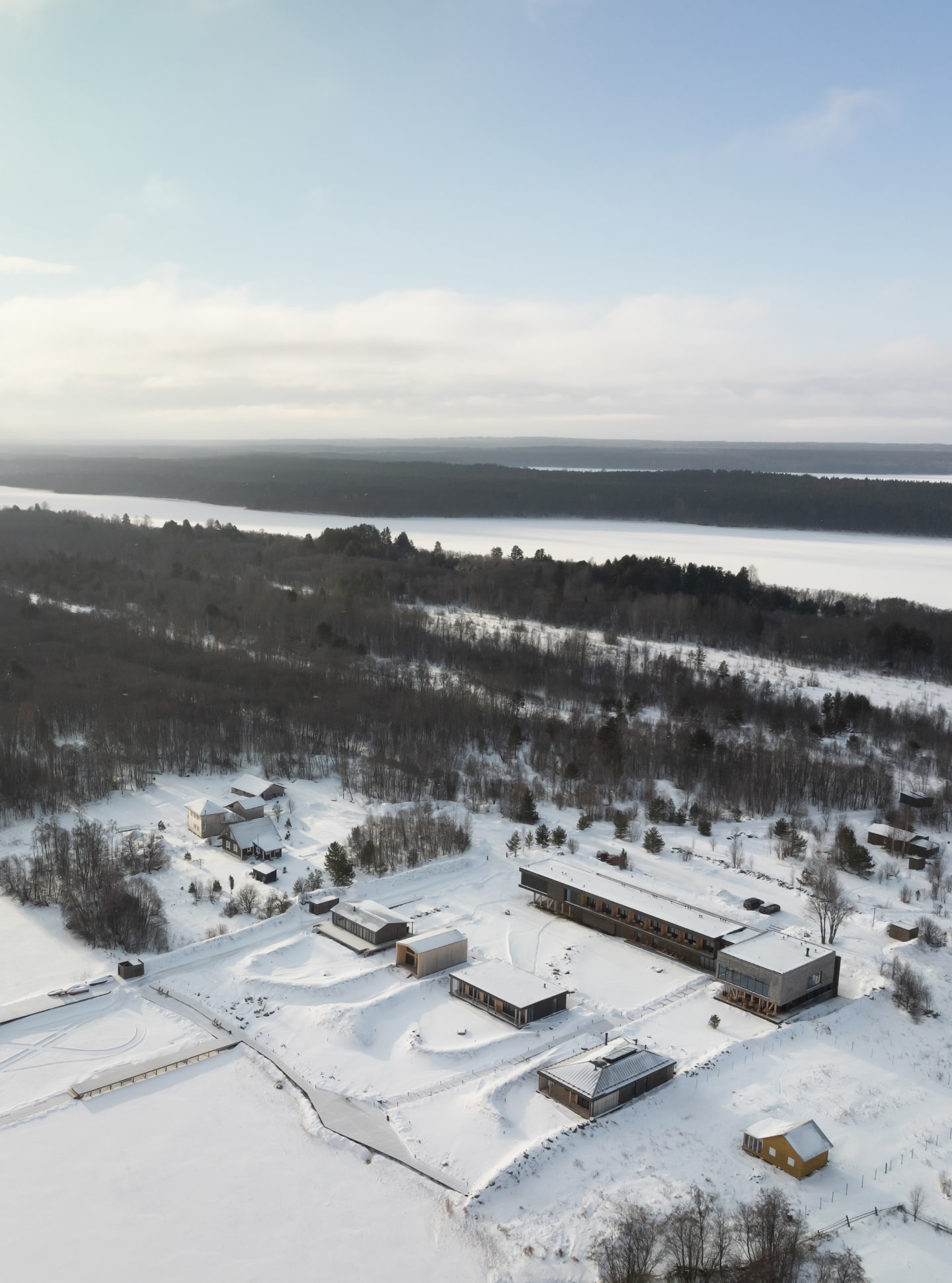


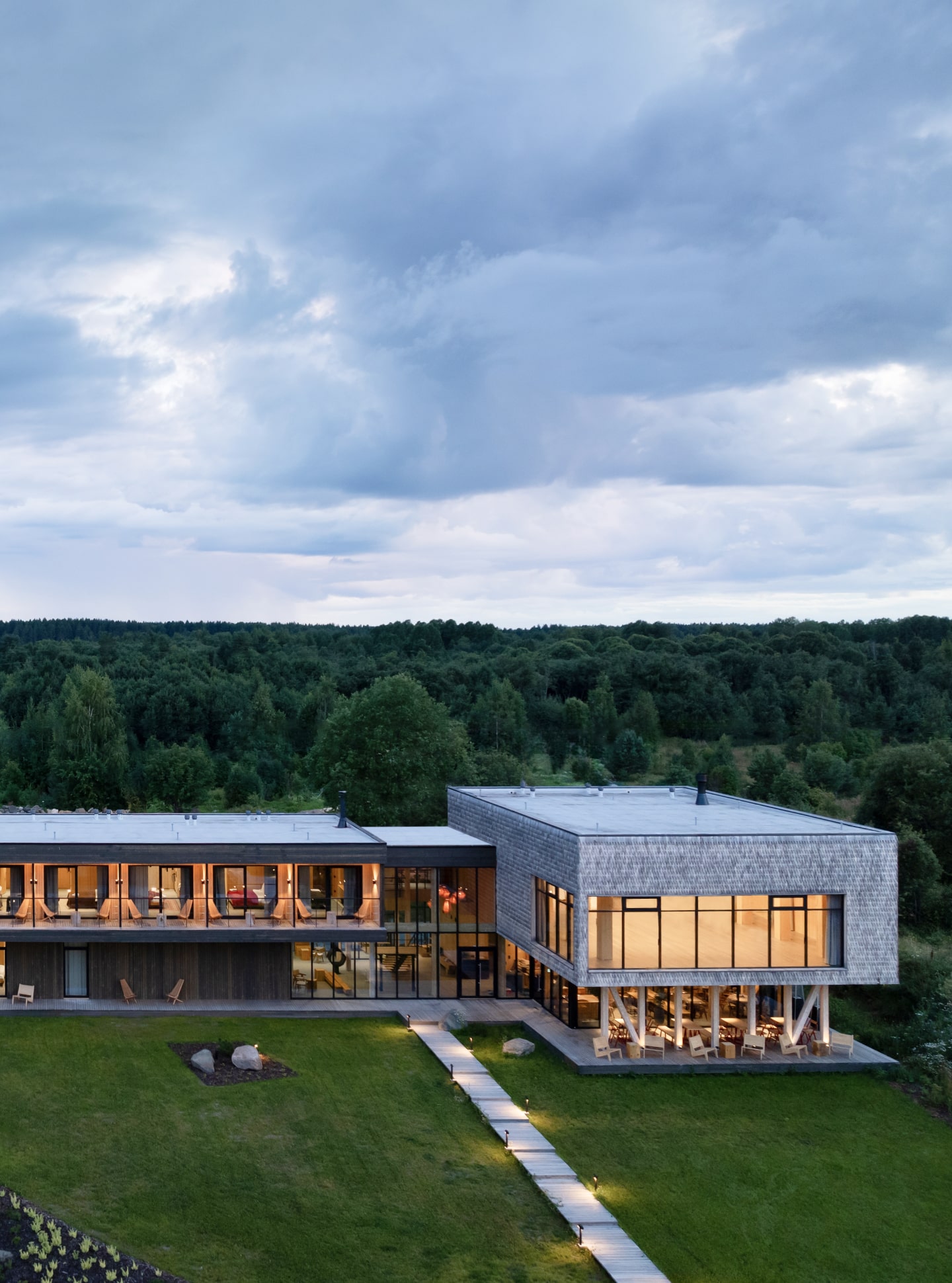
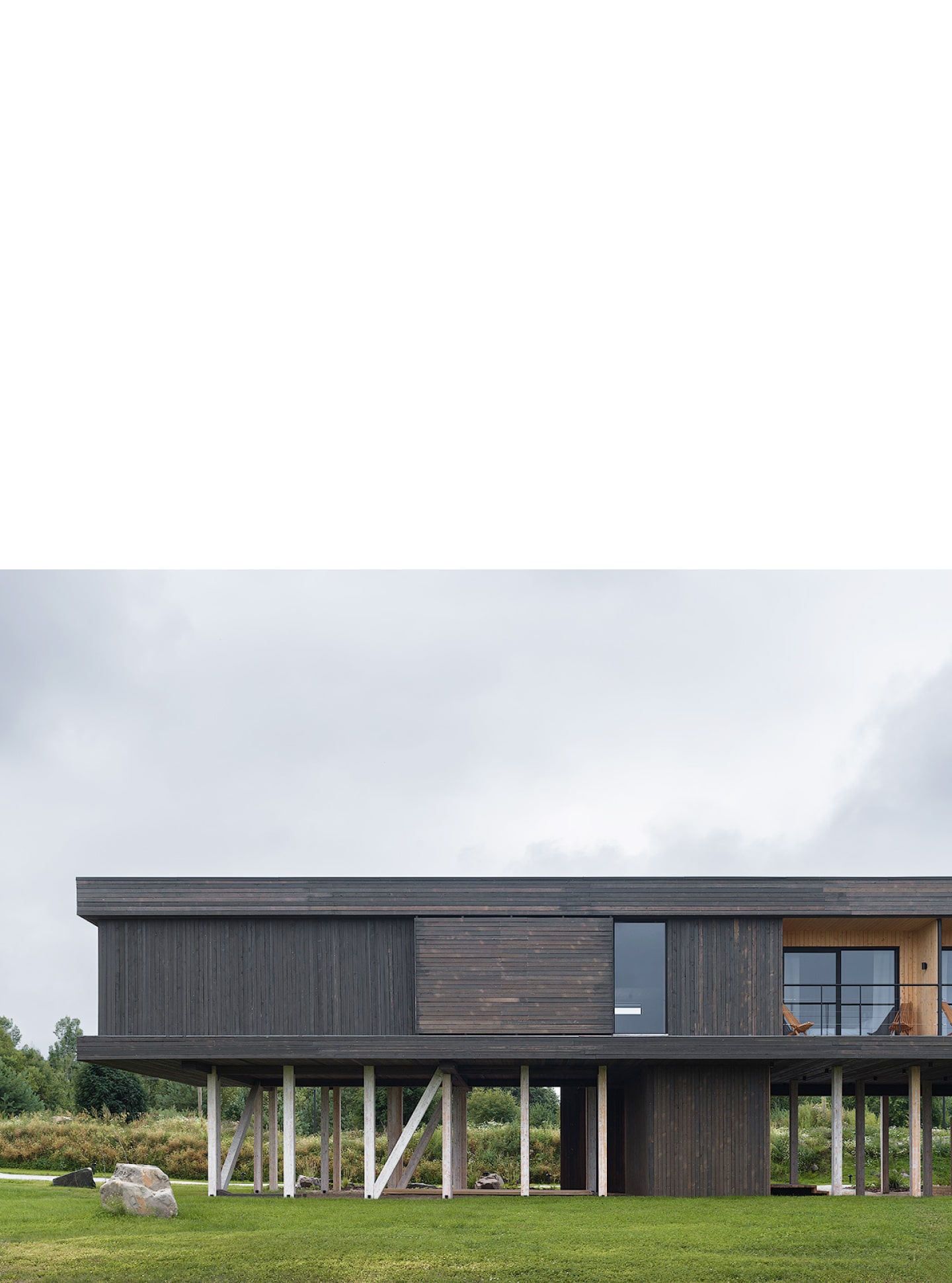
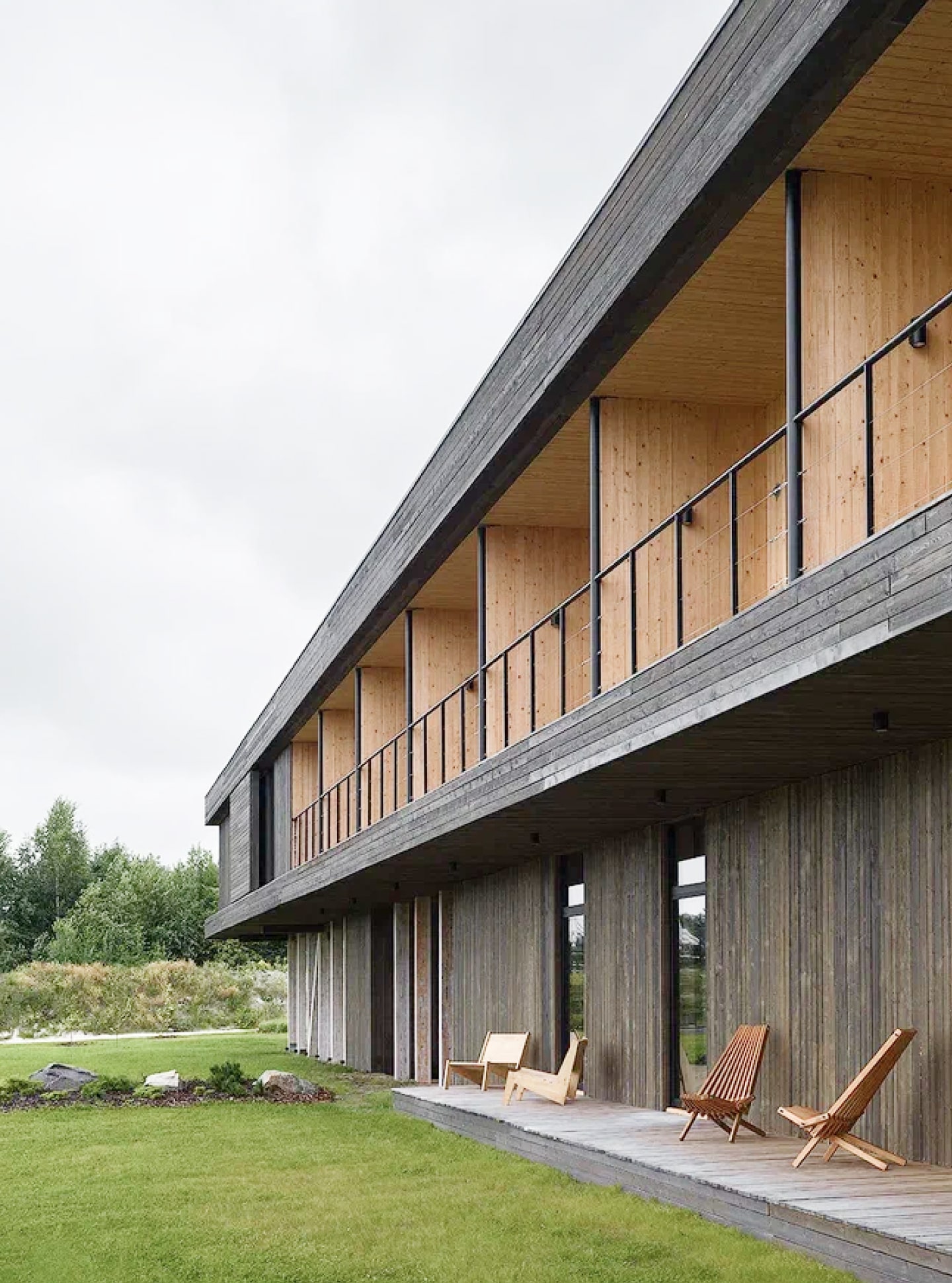
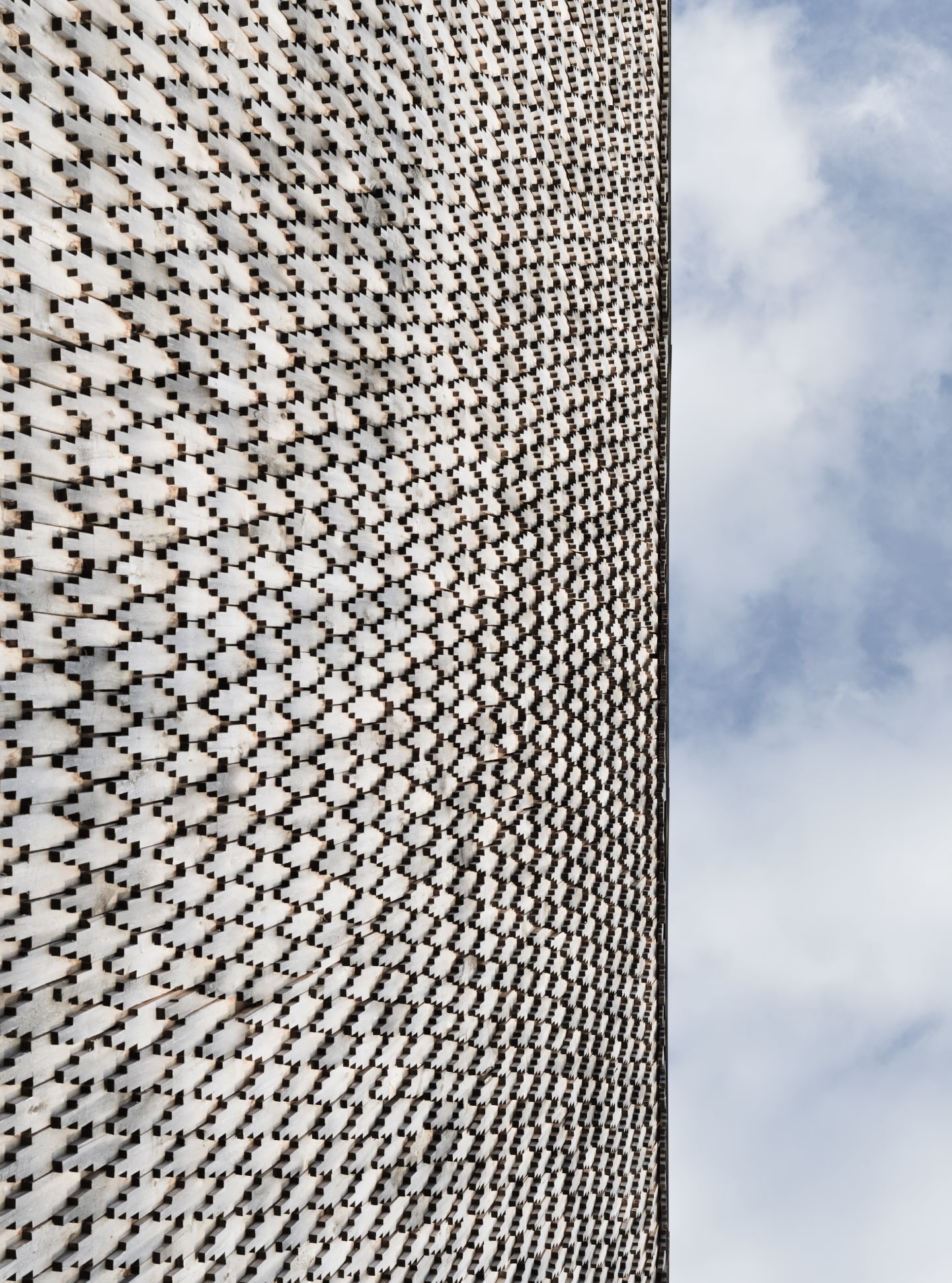

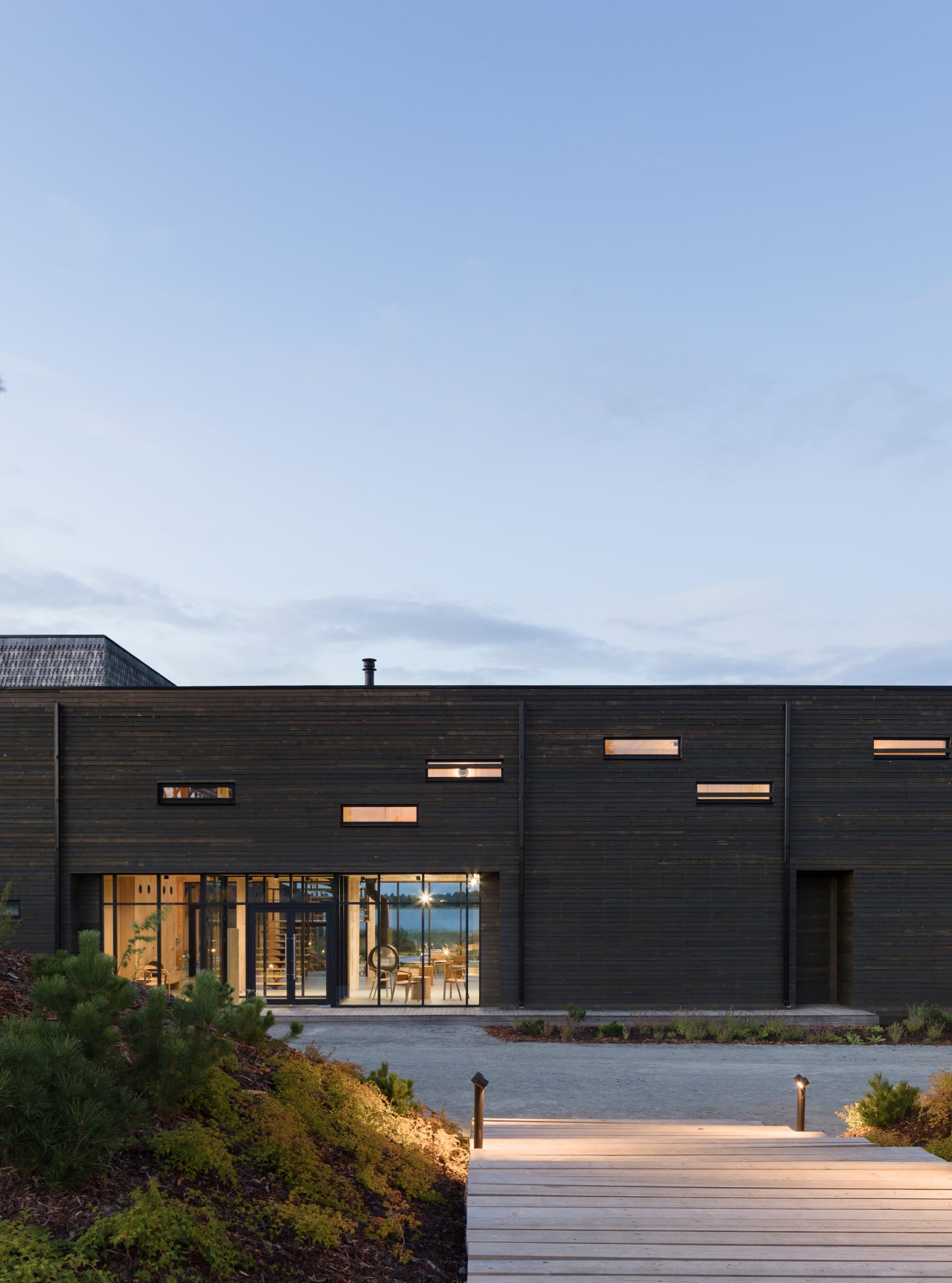

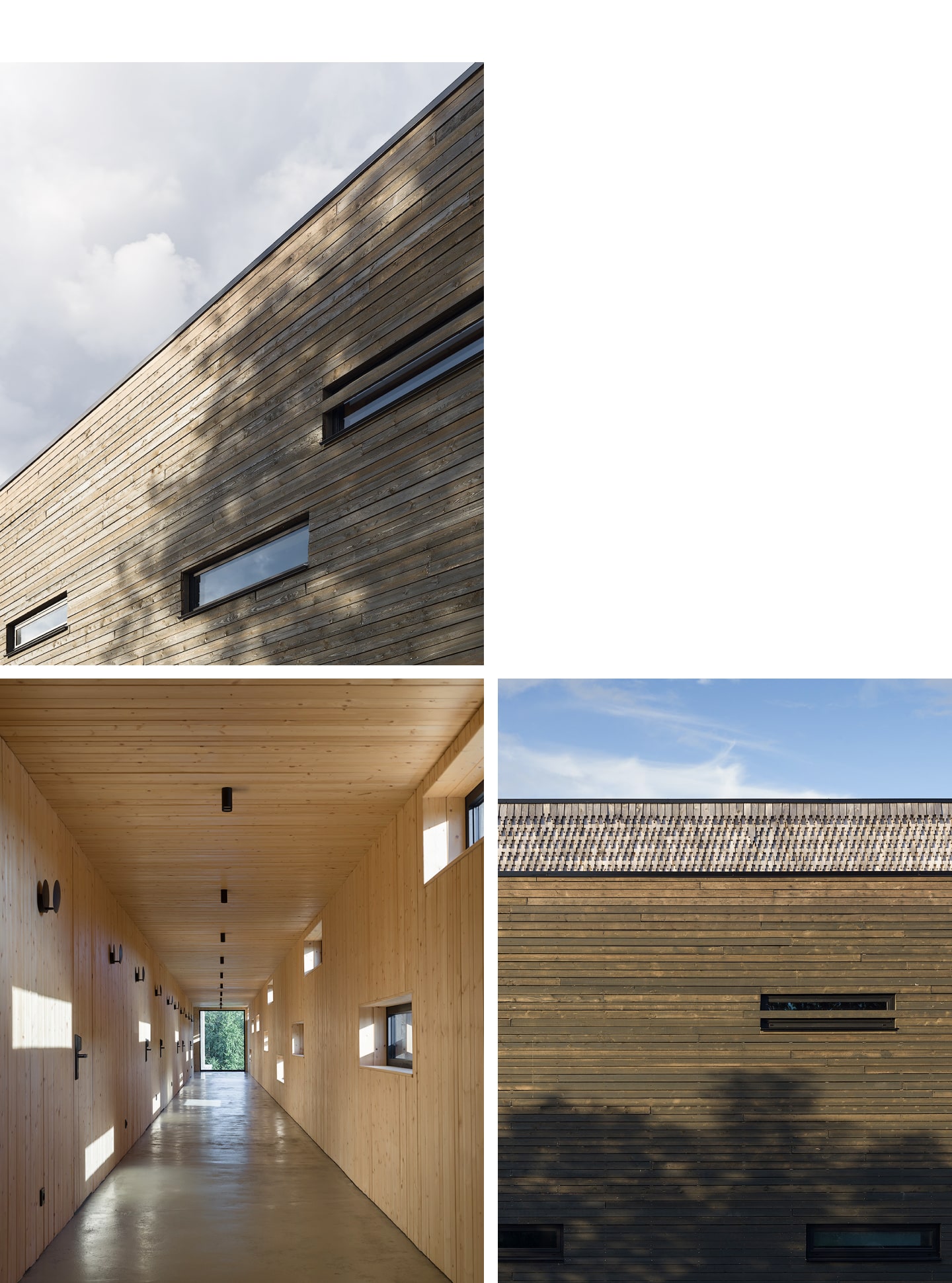
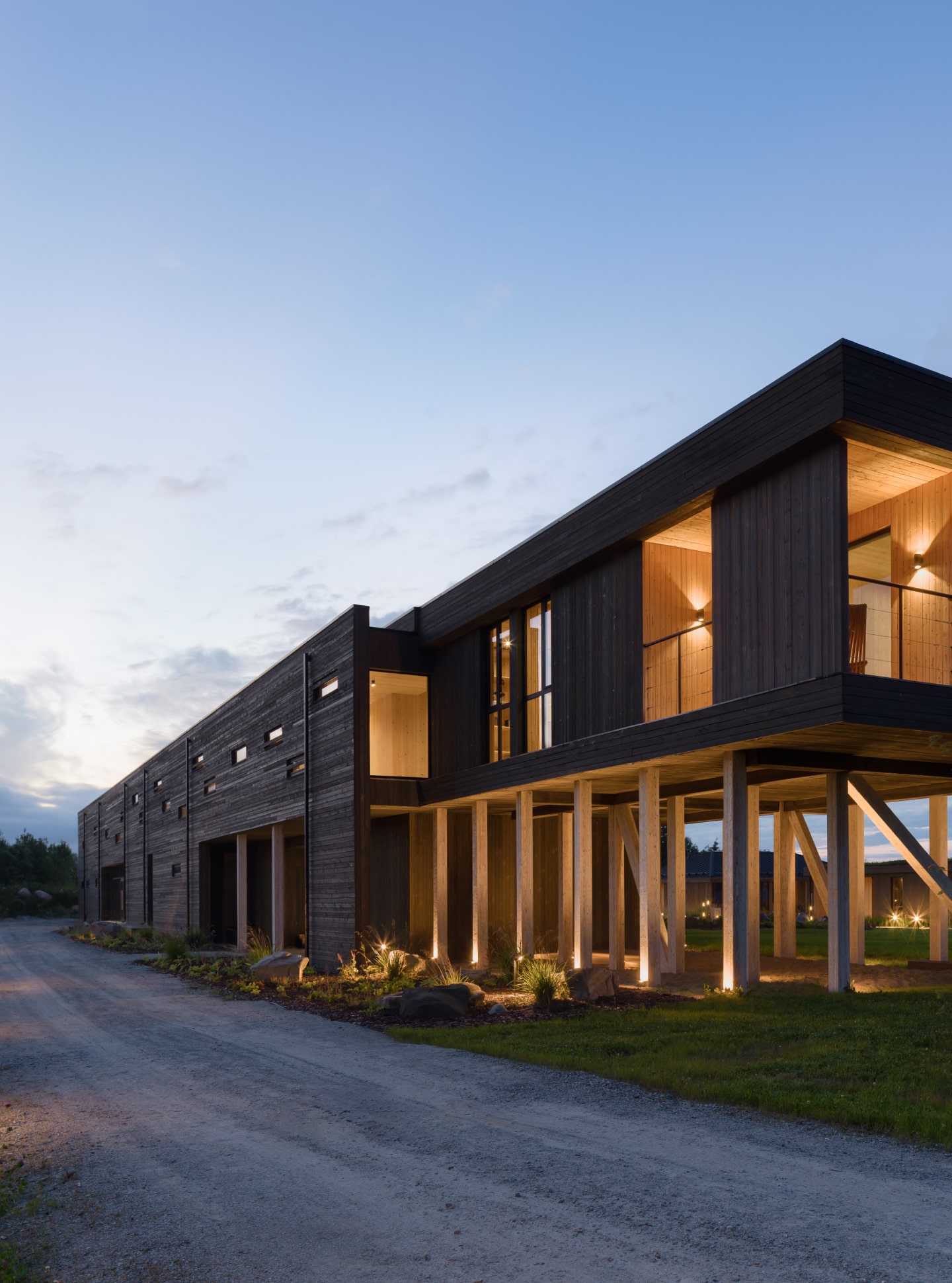
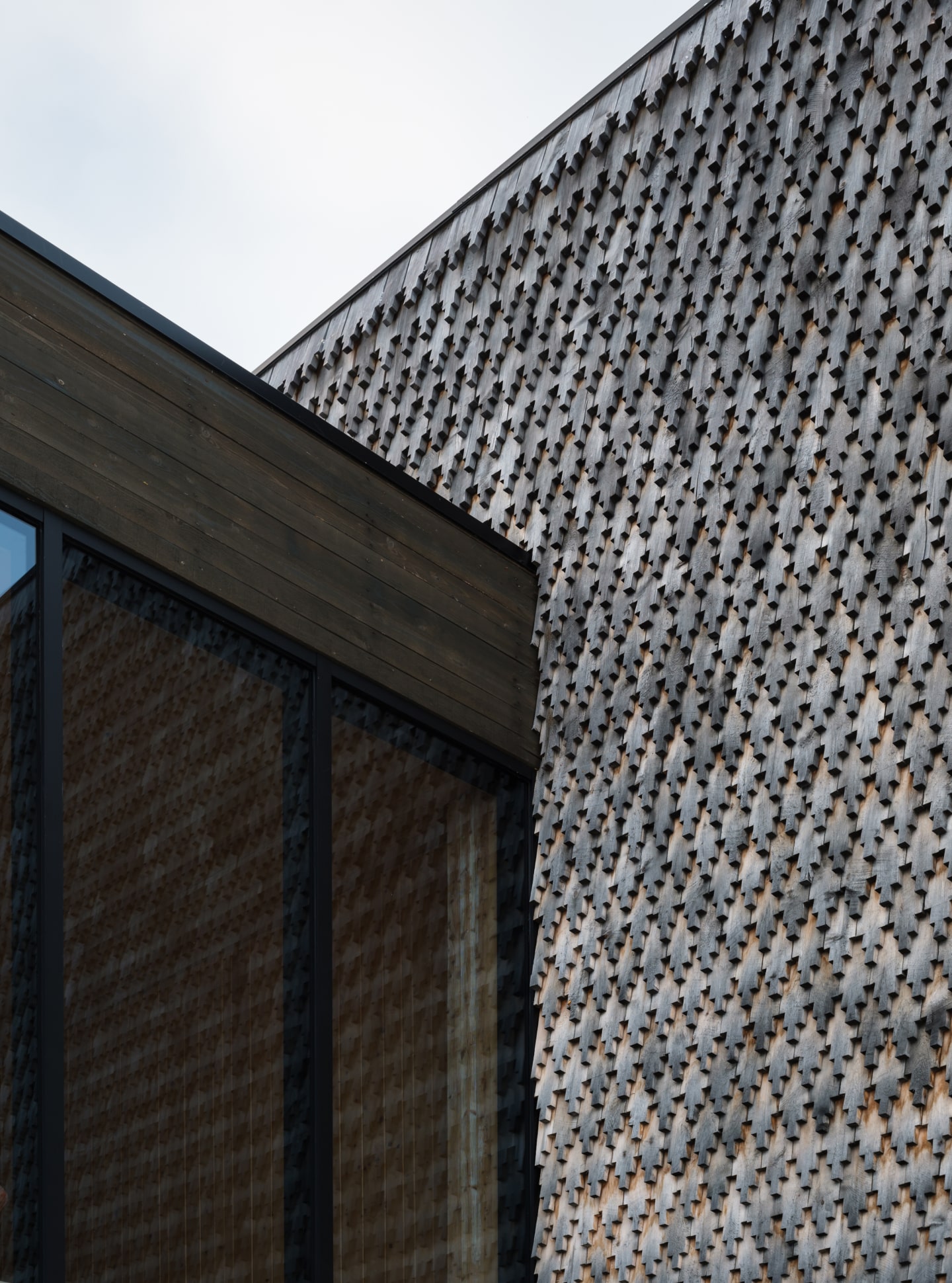
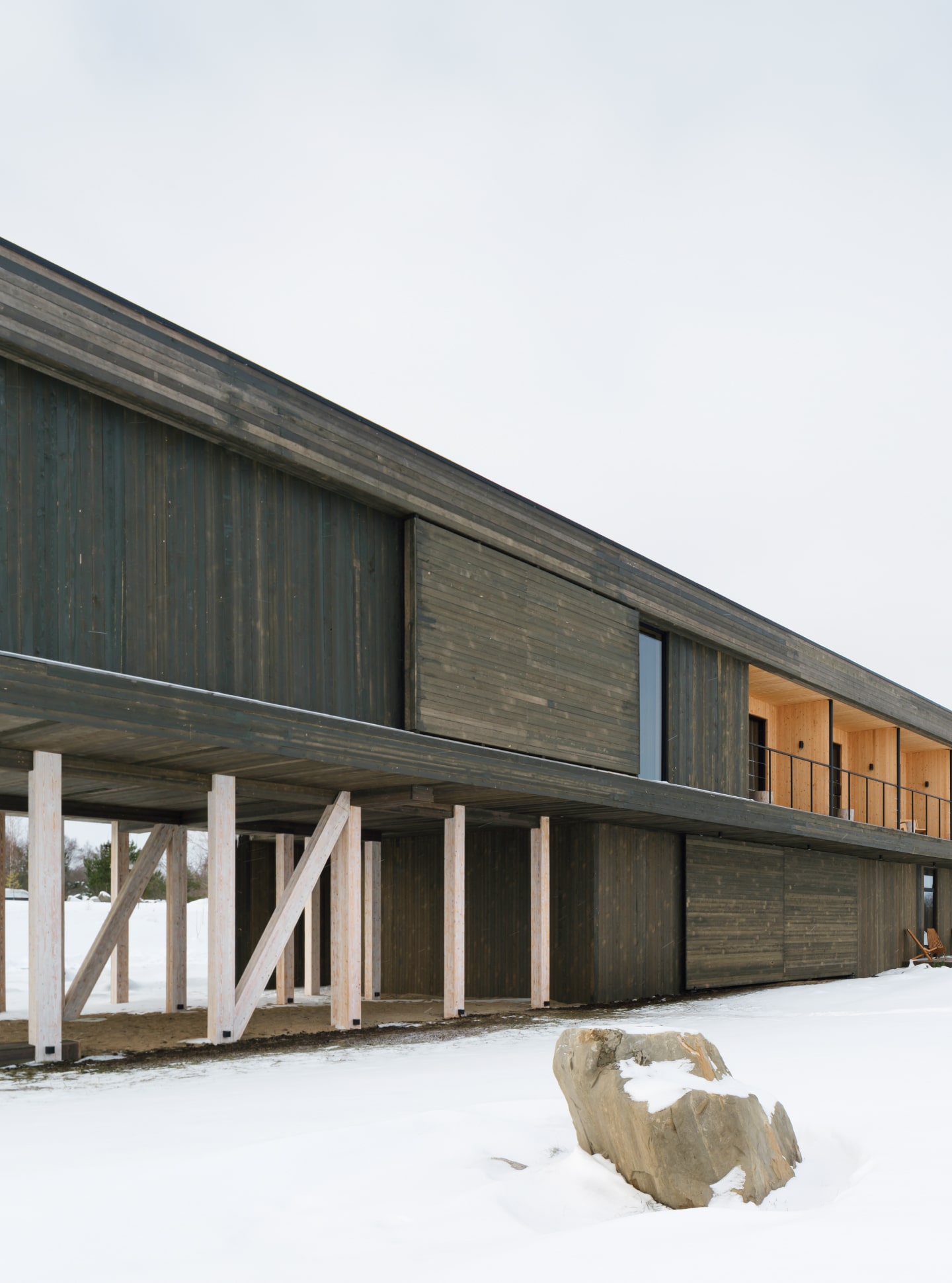
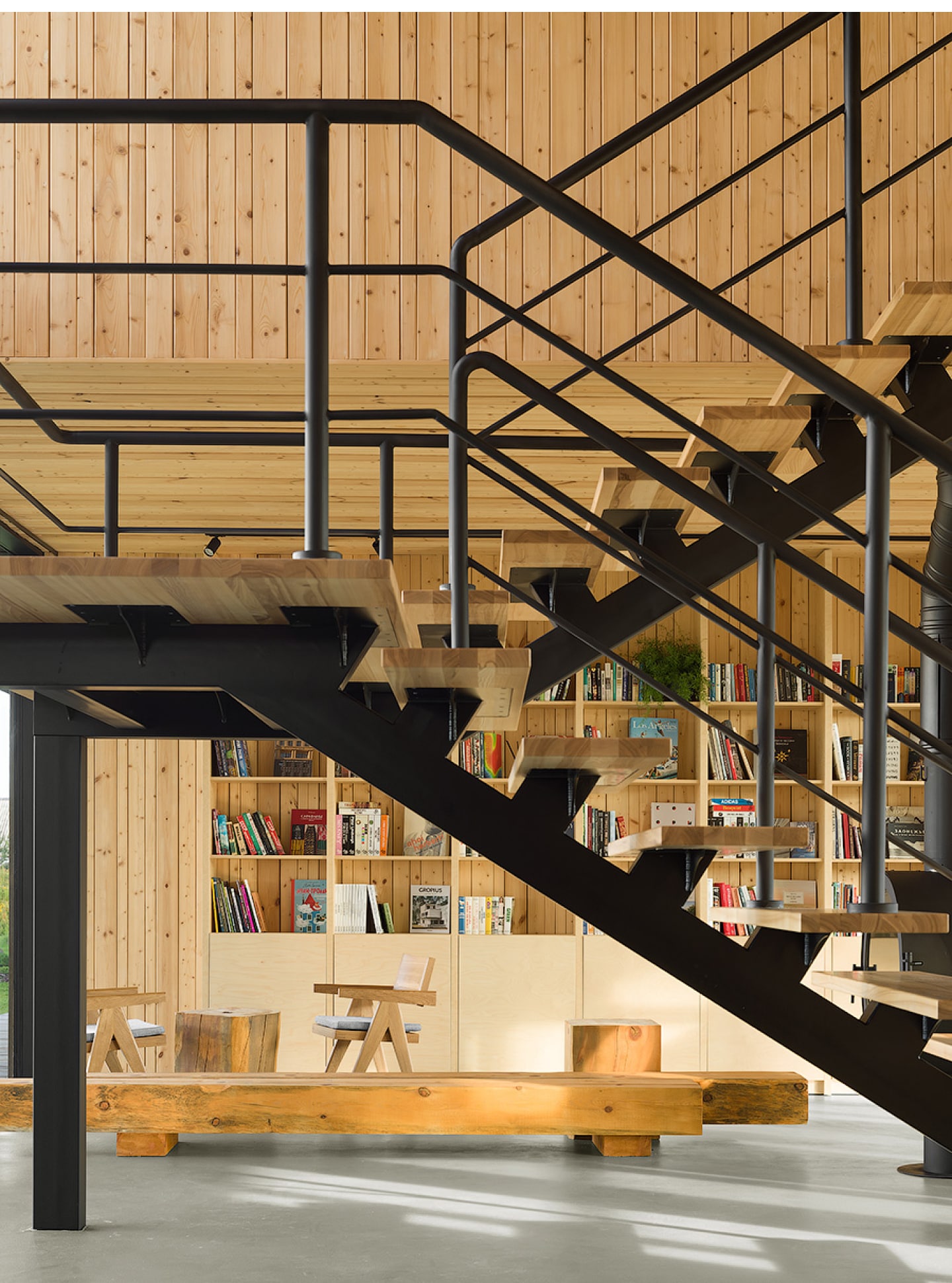



Program
Location
Area
Year
Status
Team:
Tatiana Sinelnikova
Eugeny Reshetov
Ekaterina Rostova
Yana Demina
Ilya Beliakov
Valeriya Levshankina
The retreat is located in the remote village of Kazhma, deep in Karelia, surrounded by forest and far from urban centers. The project was commissioned by two brothers who had spent their childhood summers in the village. Their aim was to create a retreat that would both open Kazhma to a wider community of visitors and, at the same time, bring new life to a place shaped by gradual depopulation.
The complex comprises two guest houses, a sauna, and the main building – a hotel with a spacious hall for yoga and events – all designed to blend with the landscape and offer expansive views of the lake. Each building balances privacy and openness, with its own distinctive silhouette while adhering to a shared architectural language. The hotel serves as the heart of the complex, accommodating guest rooms, a restaurant, a library, and a multipurpose hall for yoga, wellness practices, and cultural events. This hall acts as the conceptual center of the project, a serene space fostering connection with nature and a sense of tranquility.
On the ground floor, the hotel includes a welcoming lobby with reception and bar, a restaurant, and a library-lounge. Service areas – staff quarters, a kitchen, and storage spaces inspired by traditional northern Pomor huts – are also located on this level. The second floor is dedicated to guest rooms, providing comfortable and affordable accommodation.
In line with the idea of local revitalization, the buildings were constructed with the participation of local craftsmen and rely extensively on locally sourced timber. This material, often imperfectly cut and roughly finished, was not treated as a limitation but embraced as part of the project’s authenticity, directly tying construction to the cultural and economic reality of the region.
Architecturally, the retreat adopts simple orthogonal volumes, composed with near-Suprematist clarity. Yet these forms remain in dialogue with traditions of northern wooden architecture. This is expressed in the use of wooden shingles (lemekh) on the façades, produced and mounted by the same restorers who work on the 18th-century churches of Kizhi Island. It also appears in the band of 'volokovye' windows stretching across the western elevation, echoing vernacular precedents while reframing the surrounding landscape.
These austere, geometric volumes are set within a soft and folded terrain, where natural irregularities counterbalance architectural order. The interplay between built clarity and landscape fluidity defines the retreat’s character, allowing each to heighten the presence of the other.
A key aspect of the project was preserving and enhancing the site’s ecological character. The plot had previously been shaped by earthworks, with excess soil left in small mounds. Over time, these irregular forms became overgrown with grasses and wild plants, evolving into a spontaneous topography. Rather than erasing these traces, we chose to work with them – retaining the hills, enriching them with new plantings, and treating them as part of the project’s identity.
This approach aligns with the broader ecological setting of Kazhma, a lakeside village on Lake Onega known as a nesting ground for many bird species. In summer, their presence becomes part of the atmosphere of the place. Our interventions sought to safeguard this fragile coexistence: by keeping the landscape porous and resilient, the project not only preserves biodiversity but also frames a dialogue between architecture, northern nature, and the cultural legacy of the Russian North.
